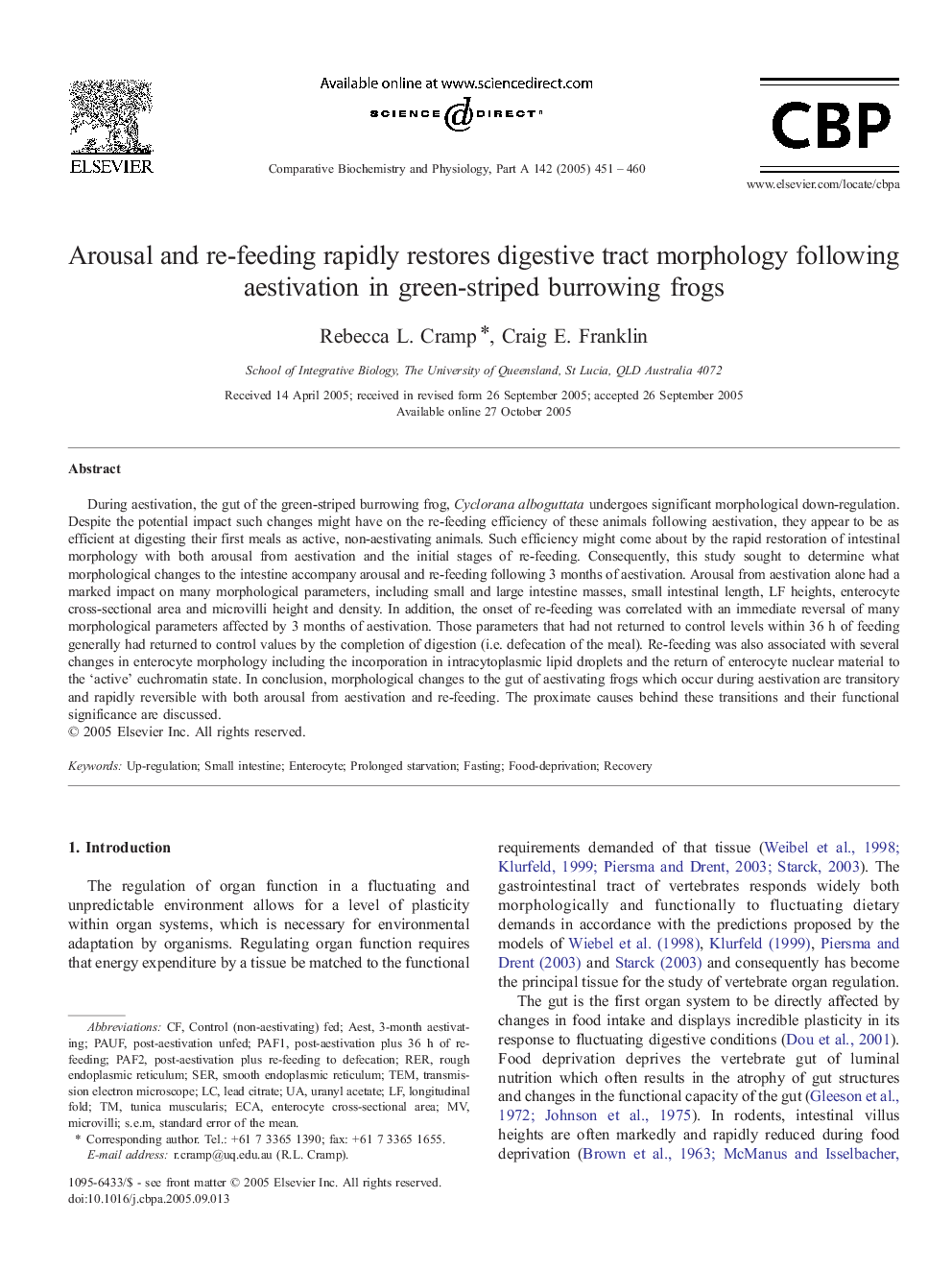| Article ID | Journal | Published Year | Pages | File Type |
|---|---|---|---|---|
| 10819049 | Comparative Biochemistry and Physiology Part A: Molecular & Integrative Physiology | 2005 | 10 Pages |
Abstract
During aestivation, the gut of the green-striped burrowing frog, Cyclorana alboguttata undergoes significant morphological down-regulation. Despite the potential impact such changes might have on the re-feeding efficiency of these animals following aestivation, they appear to be as efficient at digesting their first meals as active, non-aestivating animals. Such efficiency might come about by the rapid restoration of intestinal morphology with both arousal from aestivation and the initial stages of re-feeding. Consequently, this study sought to determine what morphological changes to the intestine accompany arousal and re-feeding following 3 months of aestivation. Arousal from aestivation alone had a marked impact on many morphological parameters, including small and large intestine masses, small intestinal length, LF heights, enterocyte cross-sectional area and microvilli height and density. In addition, the onset of re-feeding was correlated with an immediate reversal of many morphological parameters affected by 3 months of aestivation. Those parameters that had not returned to control levels within 36 h of feeding generally had returned to control values by the completion of digestion (i.e. defecation of the meal). Re-feeding was also associated with several changes in enterocyte morphology including the incorporation in intracytoplasmic lipid droplets and the return of enterocyte nuclear material to the 'active' euchromatin state. In conclusion, morphological changes to the gut of aestivating frogs which occur during aestivation are transitory and rapidly reversible with both arousal from aestivation and re-feeding. The proximate causes behind these transitions and their functional significance are discussed.
Keywords
Related Topics
Life Sciences
Biochemistry, Genetics and Molecular Biology
Biochemistry
Authors
Rebecca L. Cramp, Craig E. Franklin,
